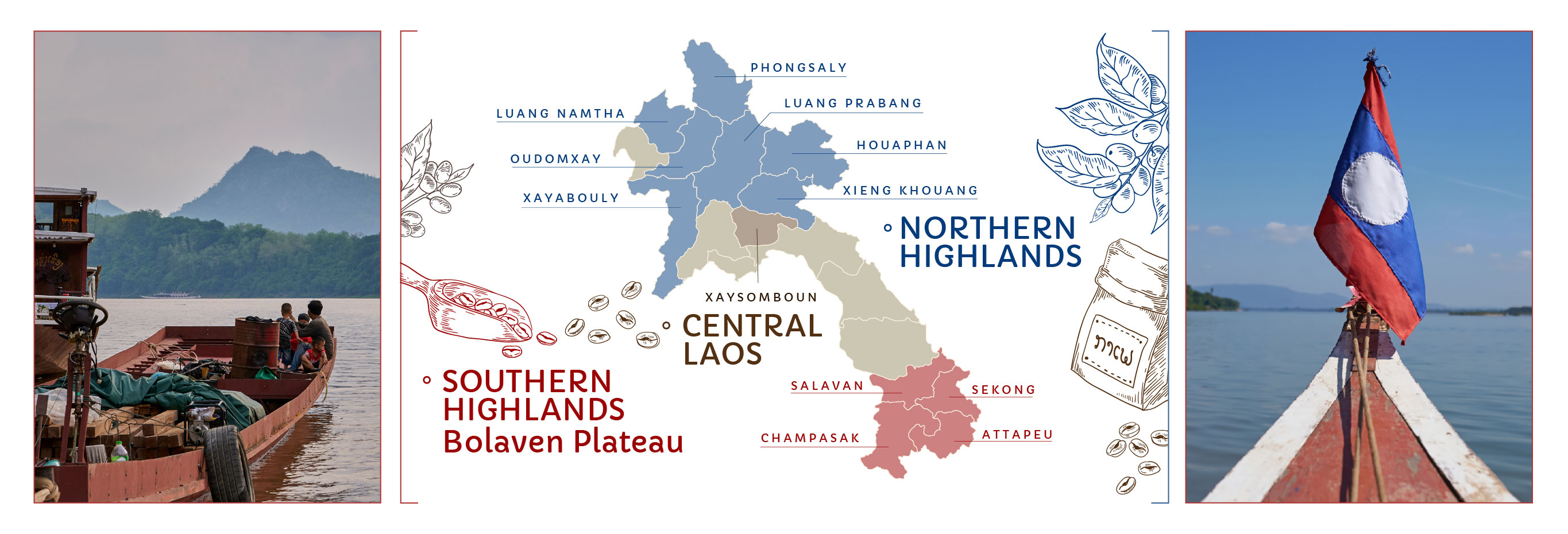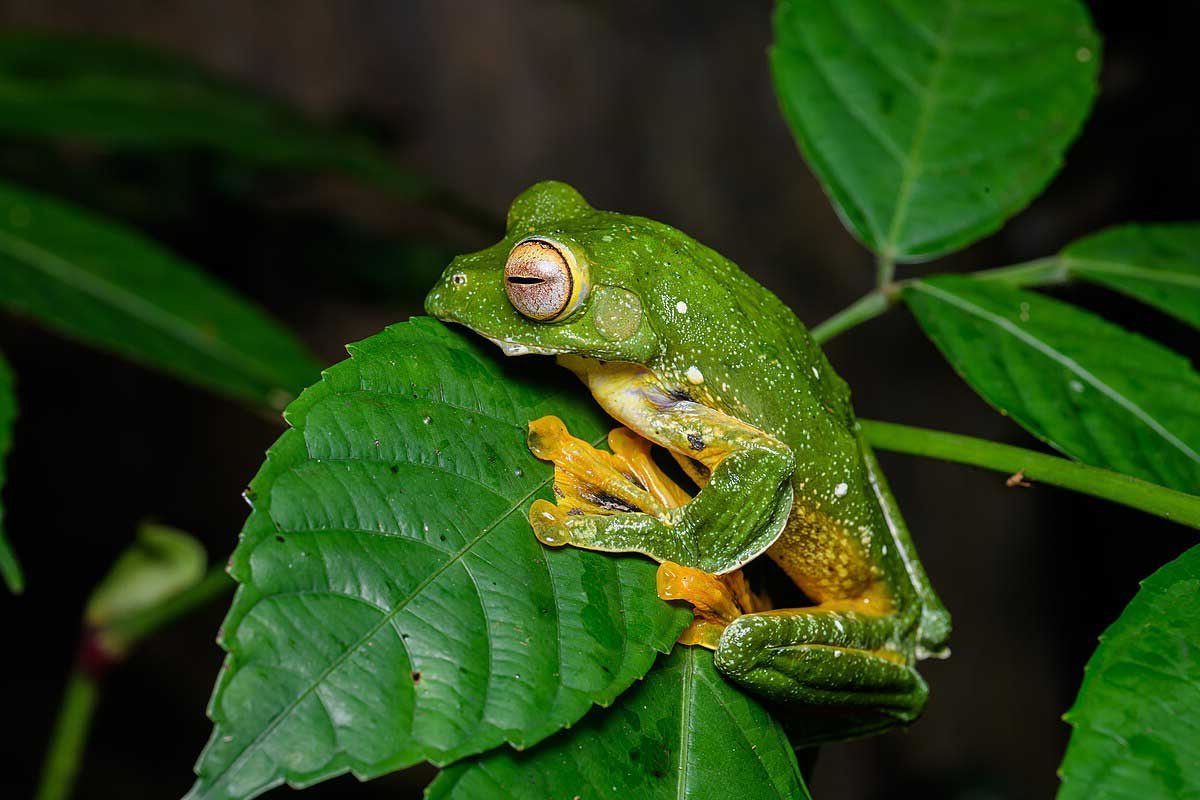Coffee in Phongsaly Province
Phongsaly in northern Laos, traditionally known for its green tea production, is shifting towards coffee cultivation.
The tropical climate includes a wet season (May–October) and a dry season (November–April). The mountainous terrain, ranging from 500–1,842 m, is covered by forests and bordered by China, Vietnam, and Luang Prabang. The cool, misty climate and fertile soil at high altitudes are perfect for Arabica coffee, allowing beans to mature slowly and develop better flavors.
Phongsaly is promoted by the Lao Government as a key coffee production area.
Its Komaen tea has earned Geographical Indication (GI) certification, known for its exceptional quality.
The province is home to 28 ethnic groups who practice traditional farming methods, including growing coffee alongside other crops for extra income.
In remote Phongsaly, coffee is often the only income source, supporting education and services. Photo by Nicole Motteux
In Northern Laos, and particularly in Phongsaly, Chinese companies have significantly influenced the local coffee industry, improving yields and growth.
Two companies in Phongsaly province, Changshengda Coffee Company and Chinghuichin, have significantly influenced the local coffee industry through a contract farming model that has driven substantial growth.
Cultivation by Chinese coffee companies
Since 2010, Changshengda has implemented a "2+3" contract farming approach, providing local farmers with agricultural technology, essential supplies, and a commercial outlet. This initiative has resulted in the cultivation of over 3,000 hectares of coffee.
Chinghuichin operates under this model too. The company purchases coffee cherries from local farmers and processes them at basic wet processing centers using straightforward drying methods on plastic sheeting. The dried coffee is then exported to Yunnan, connecting local production with broader markets.
Origin Highlights
Culture & Caves in Phongsaly
Phongsaly tree frog (Rhacophorus kio)
Phongsaly is one of the least-explored regions of Laos, offering a glimpse into a way of life shaped by nature, history, and tradition.
At 1,625 m, Phou Fa Mountain towers over Phongsaly town with panoramic views of the surrounding peaks. A 45-minute hike leads to a stupa and Buddha statue at the summit, a peaceful spot above the clouds.
Nam Ou River, a major tributary of the Mekong, winds through dramatic canyons and valleys. Its waters have shaped the landscape for centuries, and its banks are home to remote villages and fertile farmland.
Visitors can explore Phou Den Din National Protected Area, covering 222,000 ha along the Vietnam border. This vast wilderness remains largely untouched, with dense rainforests and rugged mountains providing a sanctuary for rare wildlife, including tigers, elephants, and monkeys.
The Nam Lan Conservation Area is steep, forested terrain, a refuge for diverse plant and animal species. This pristine environment that highlights the region’s natural beauty and ecological importance.
Mist-covered mountains surrounding the sleepy town of Phongsaly, high in northern Laos.
Akha hill tribe women from Northern Lao. Photo by Adobestock







